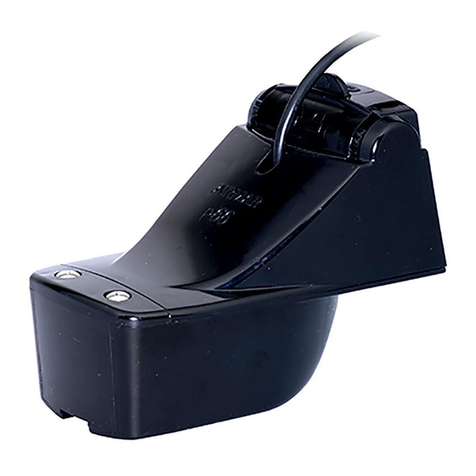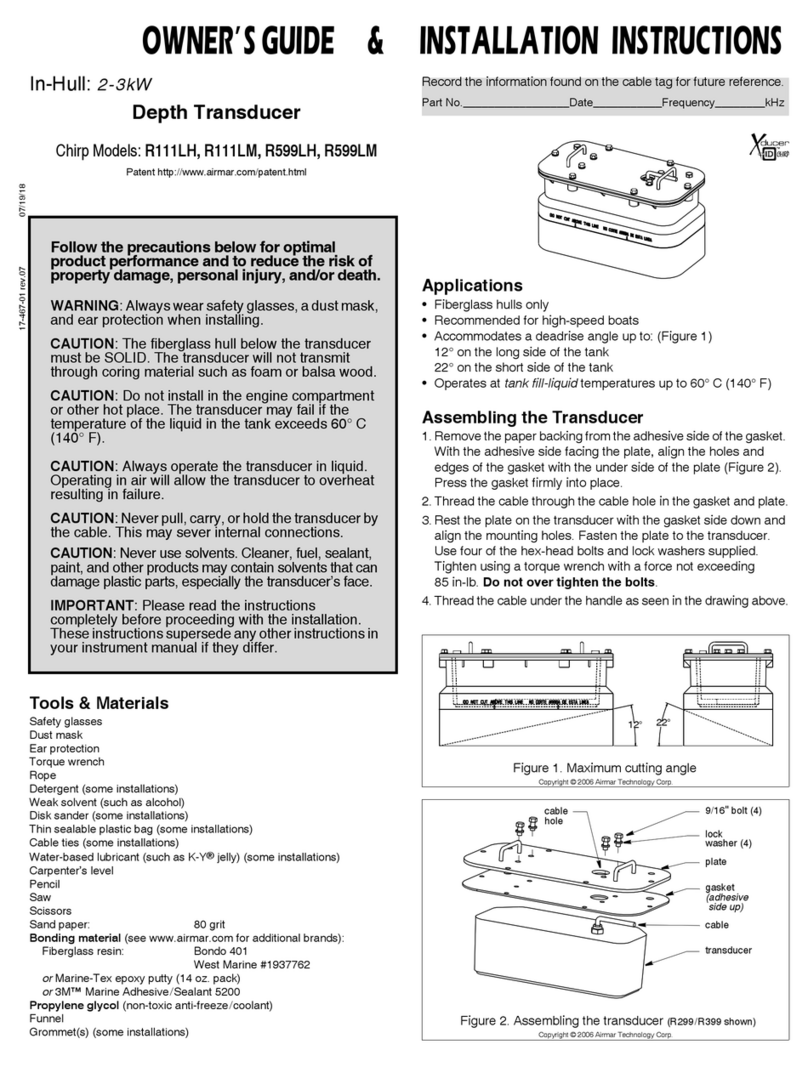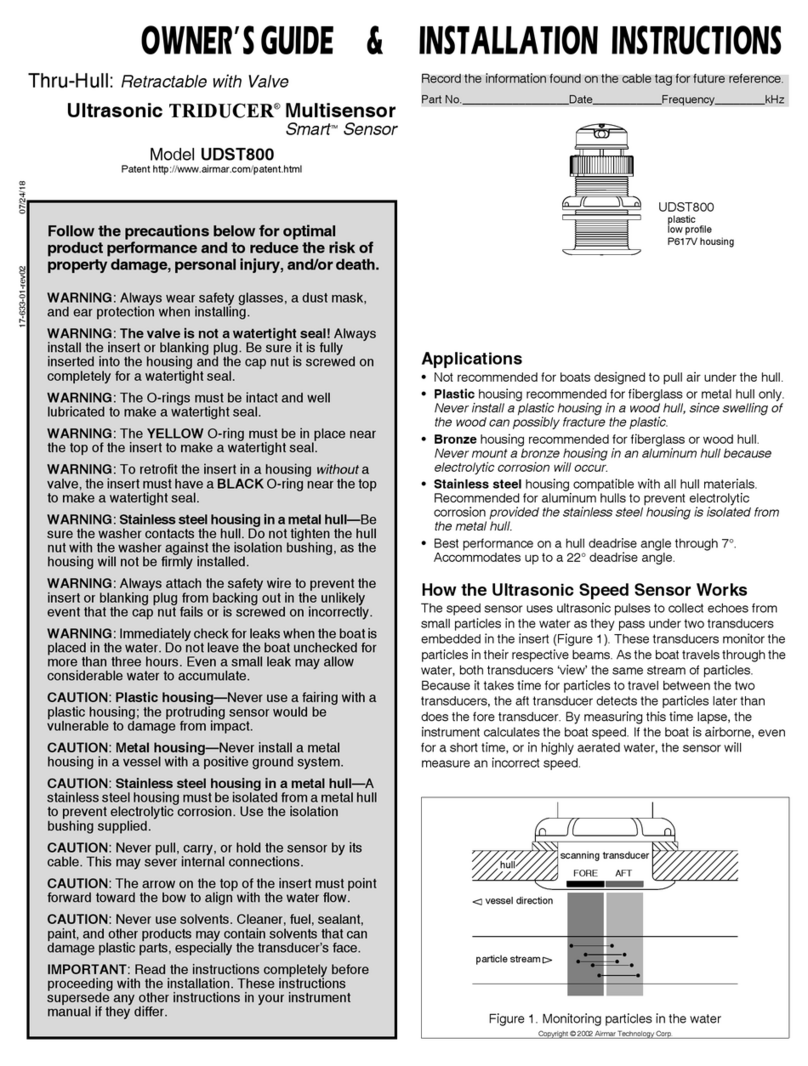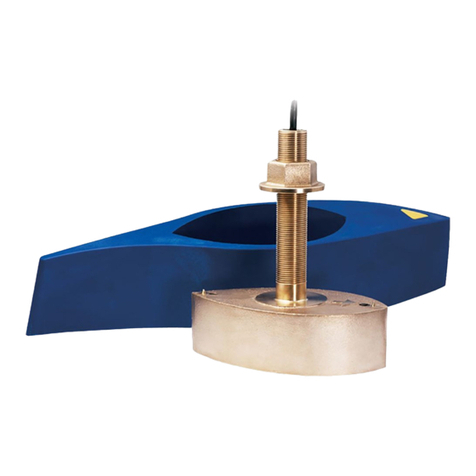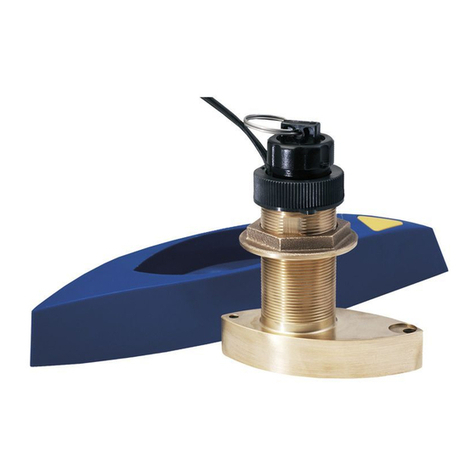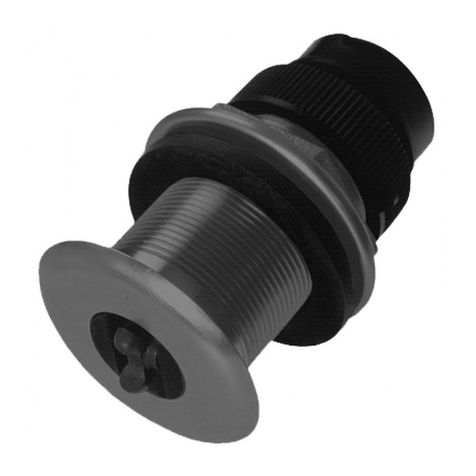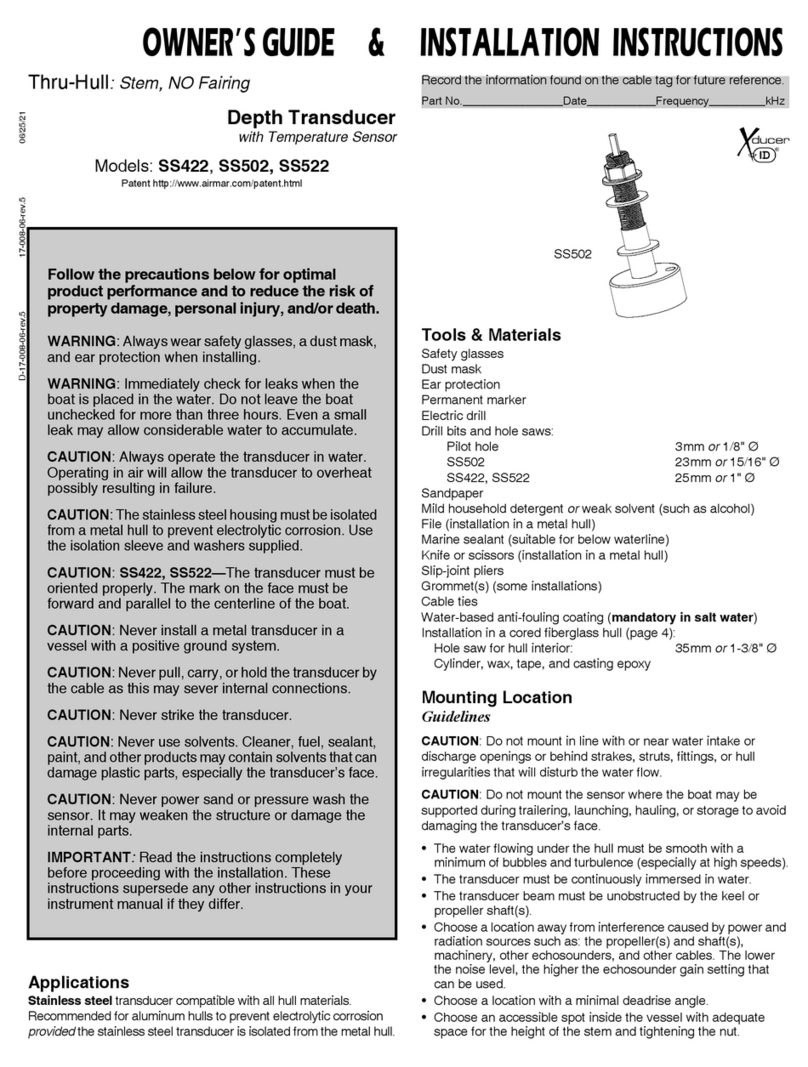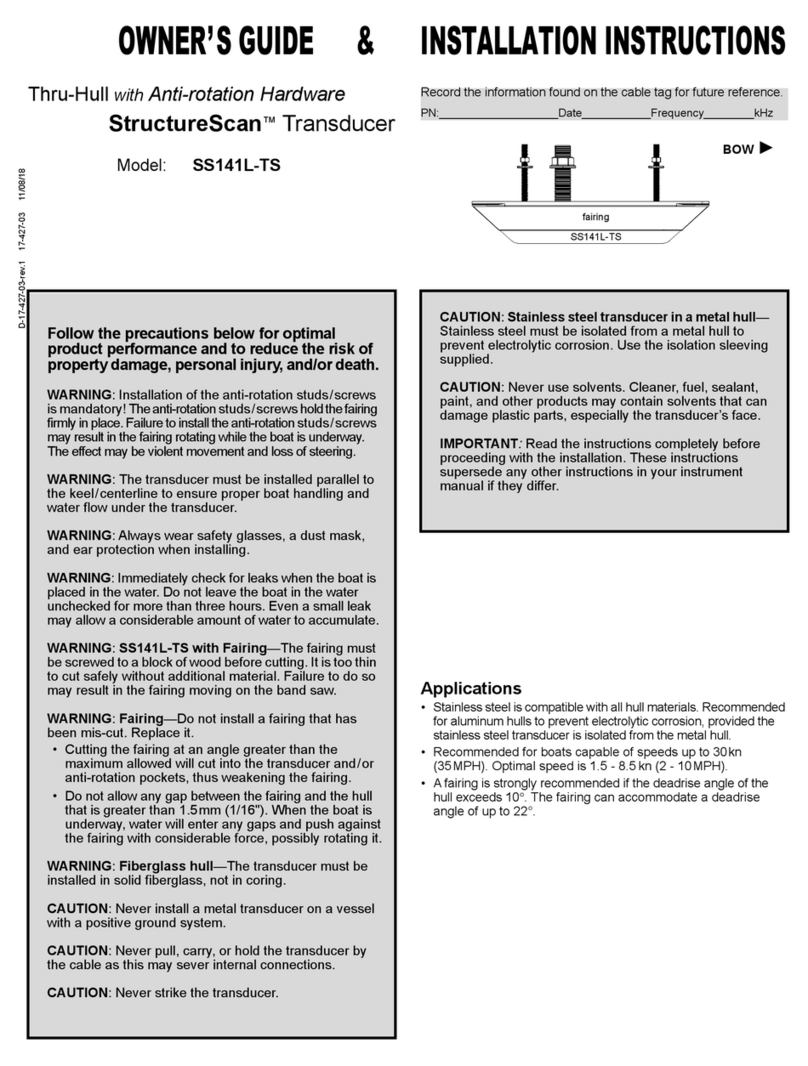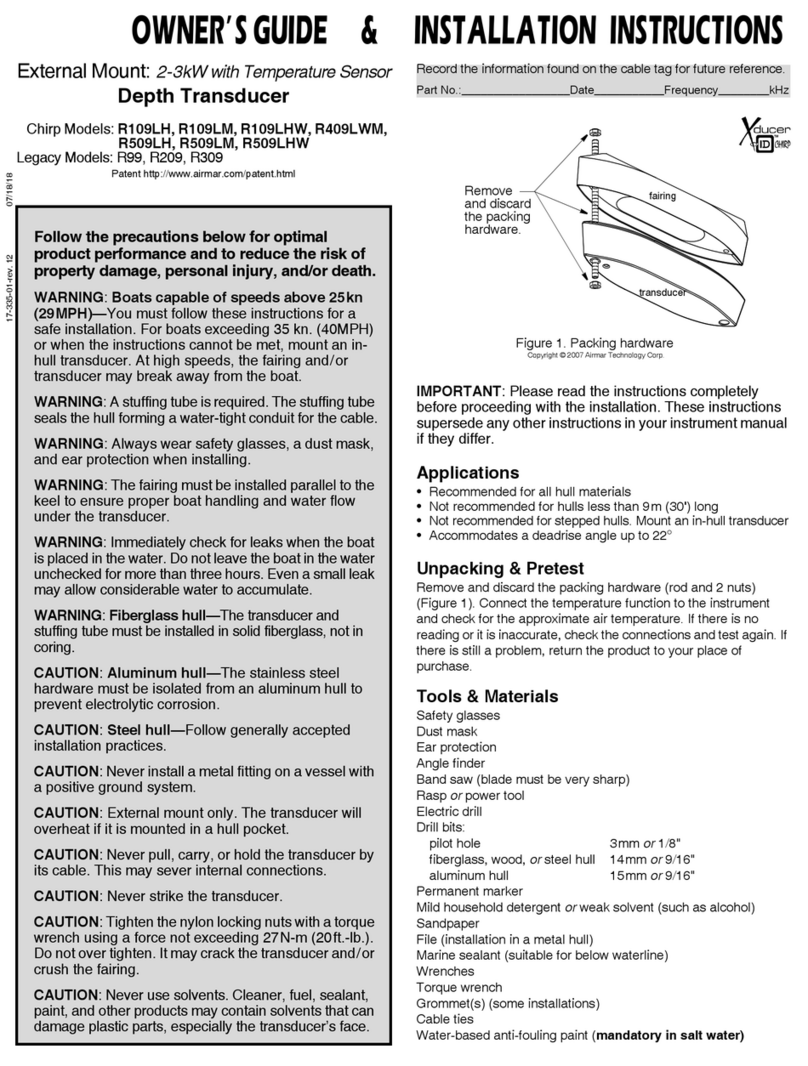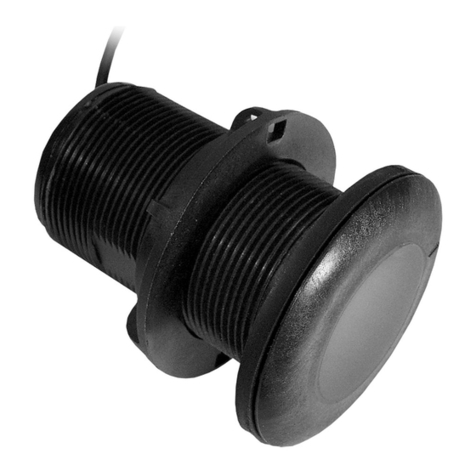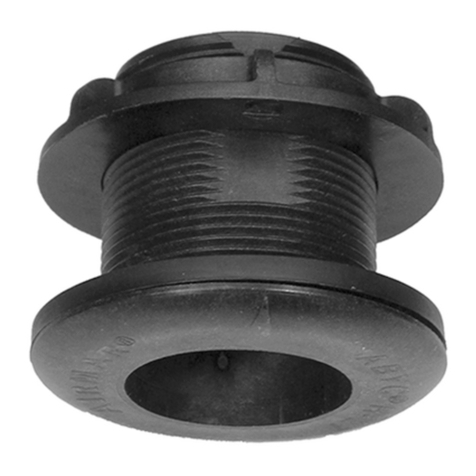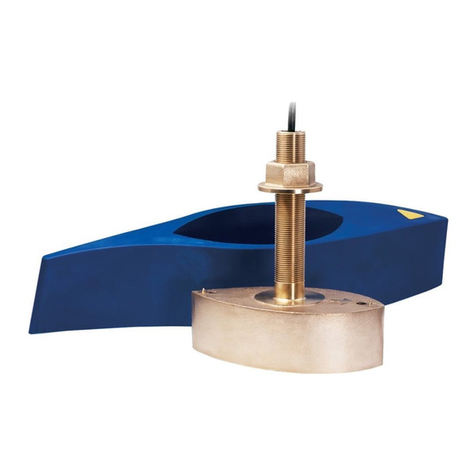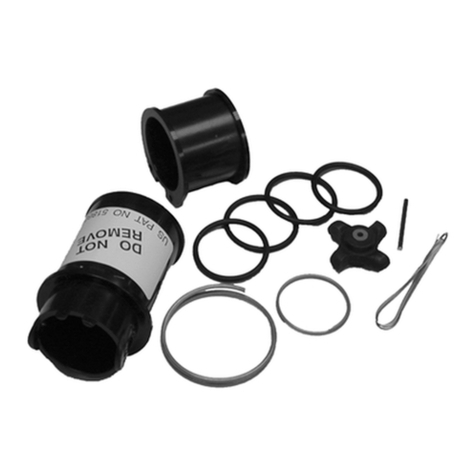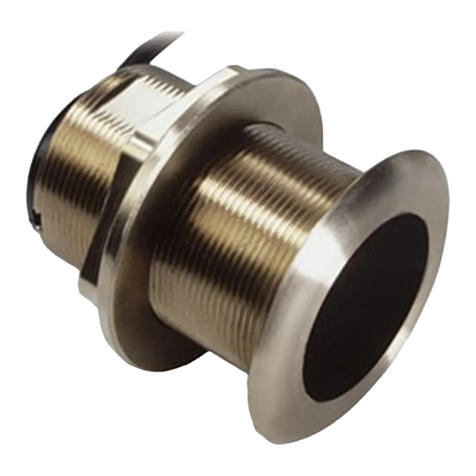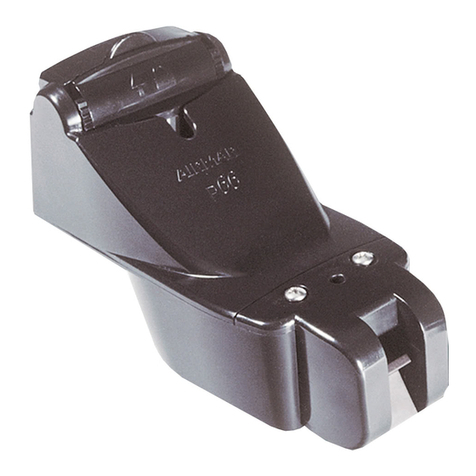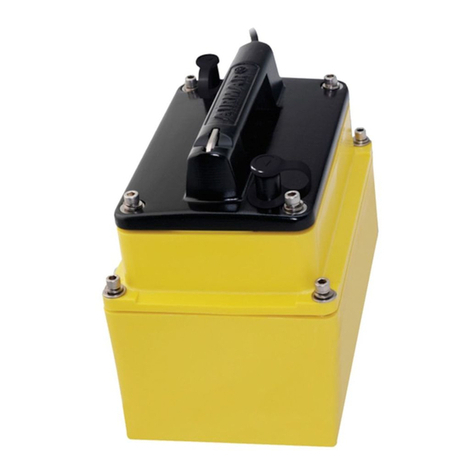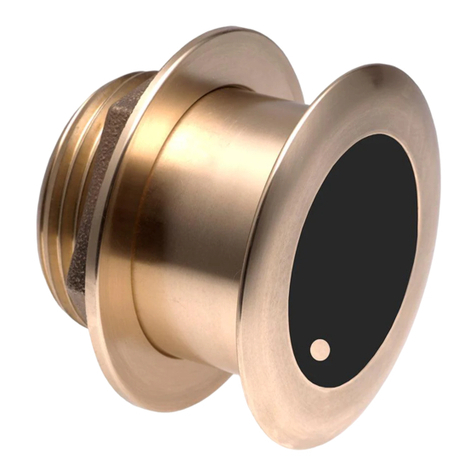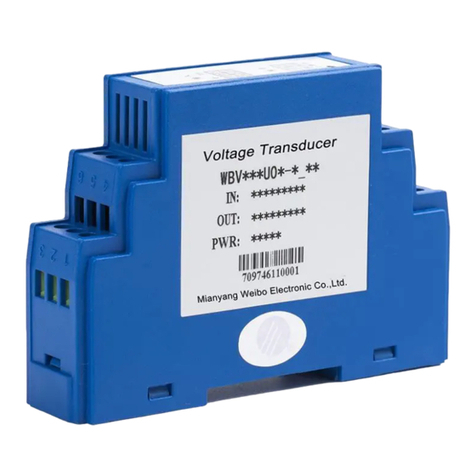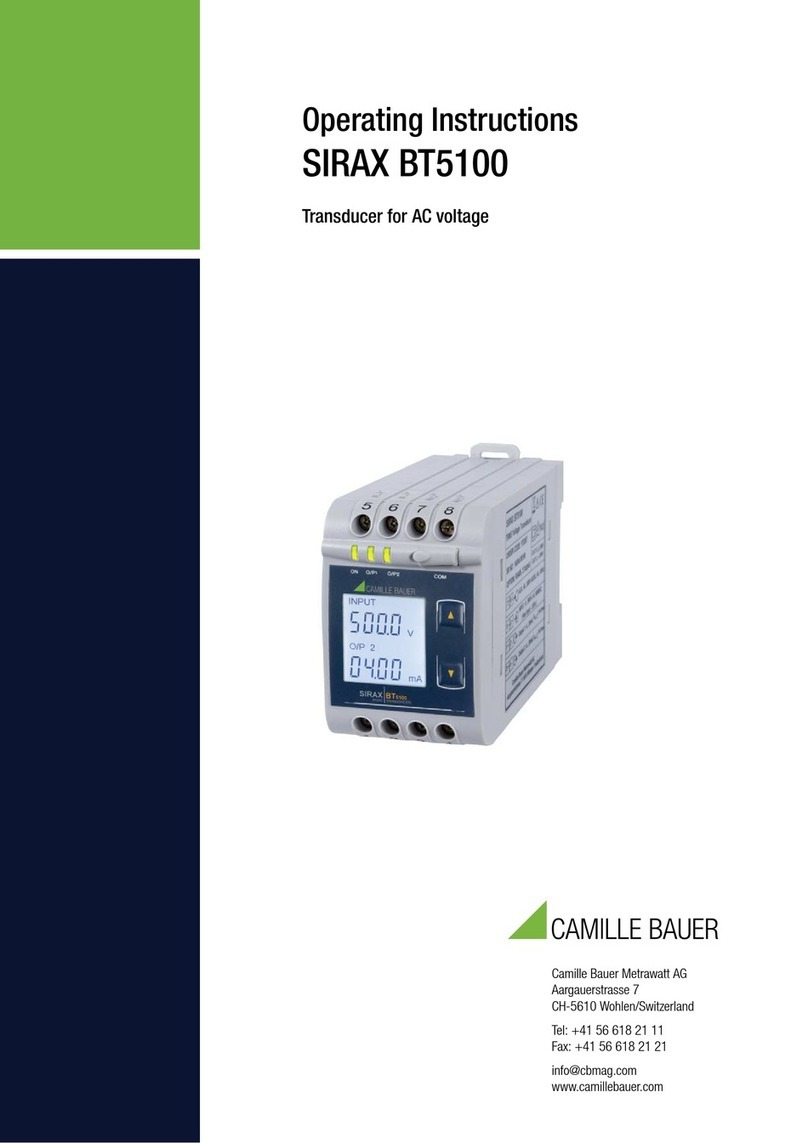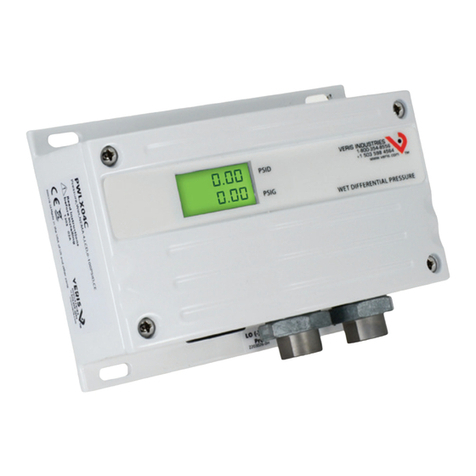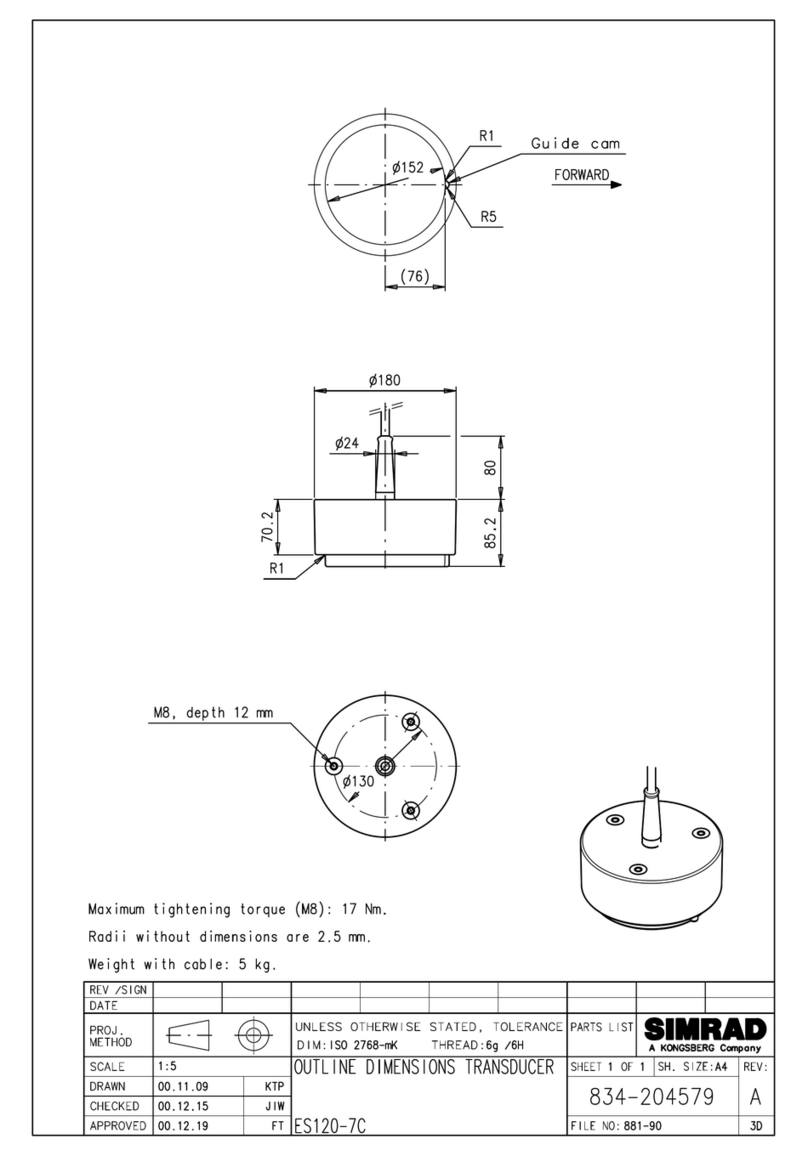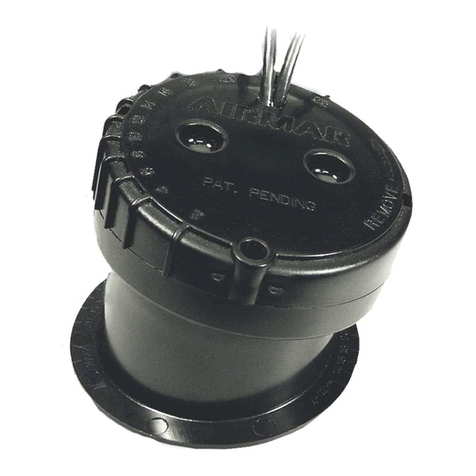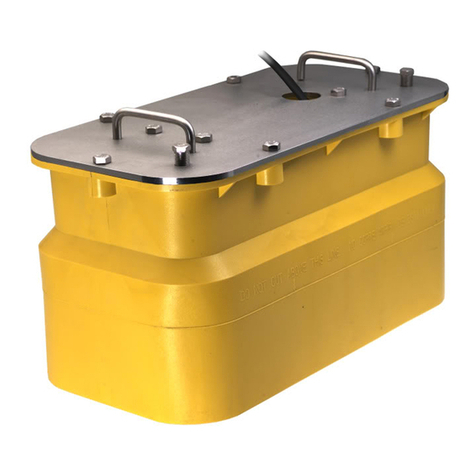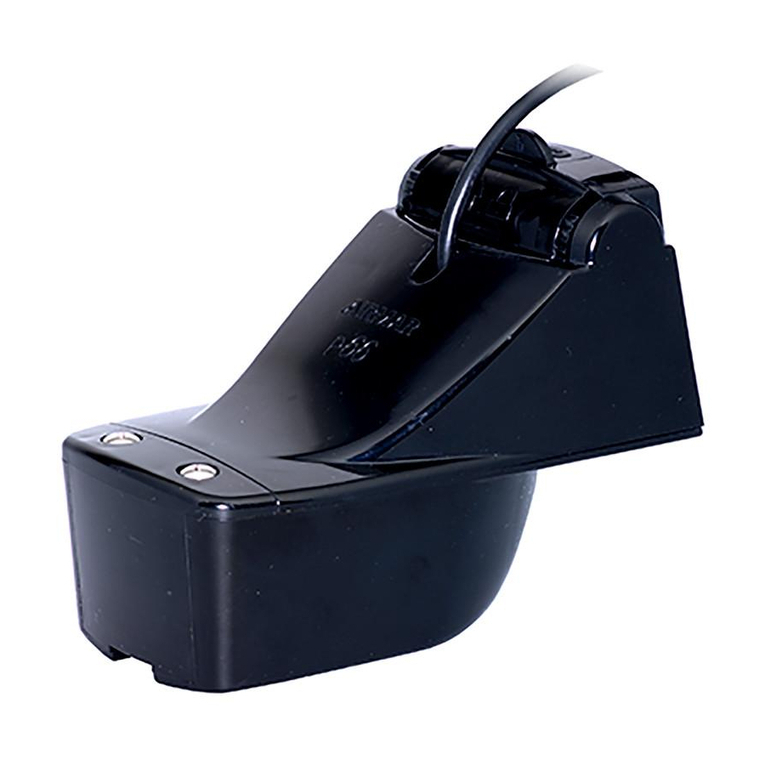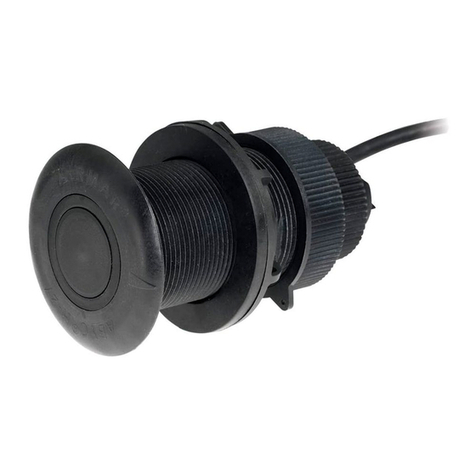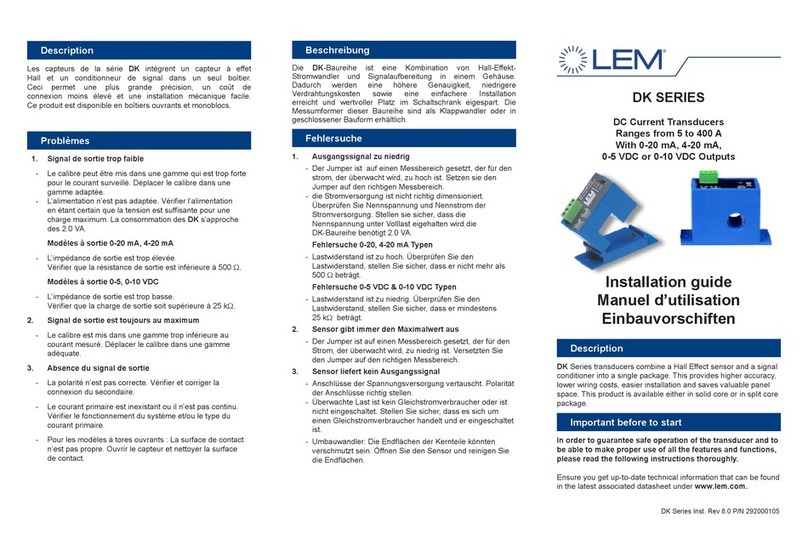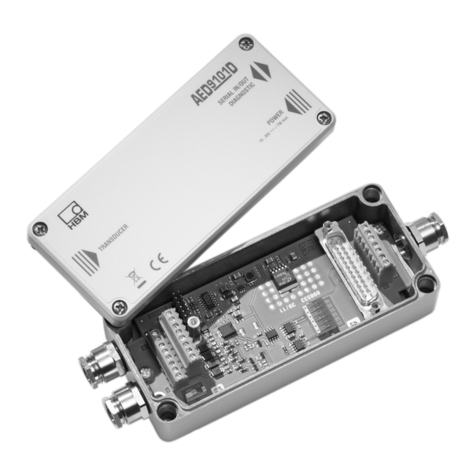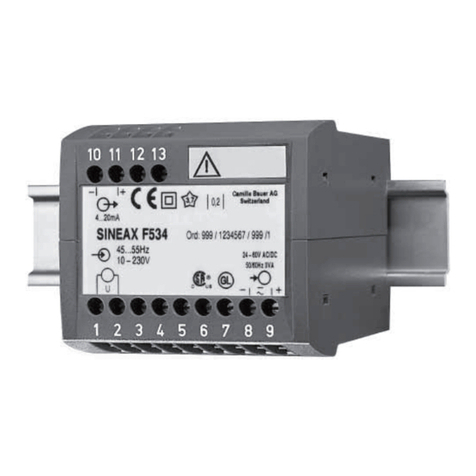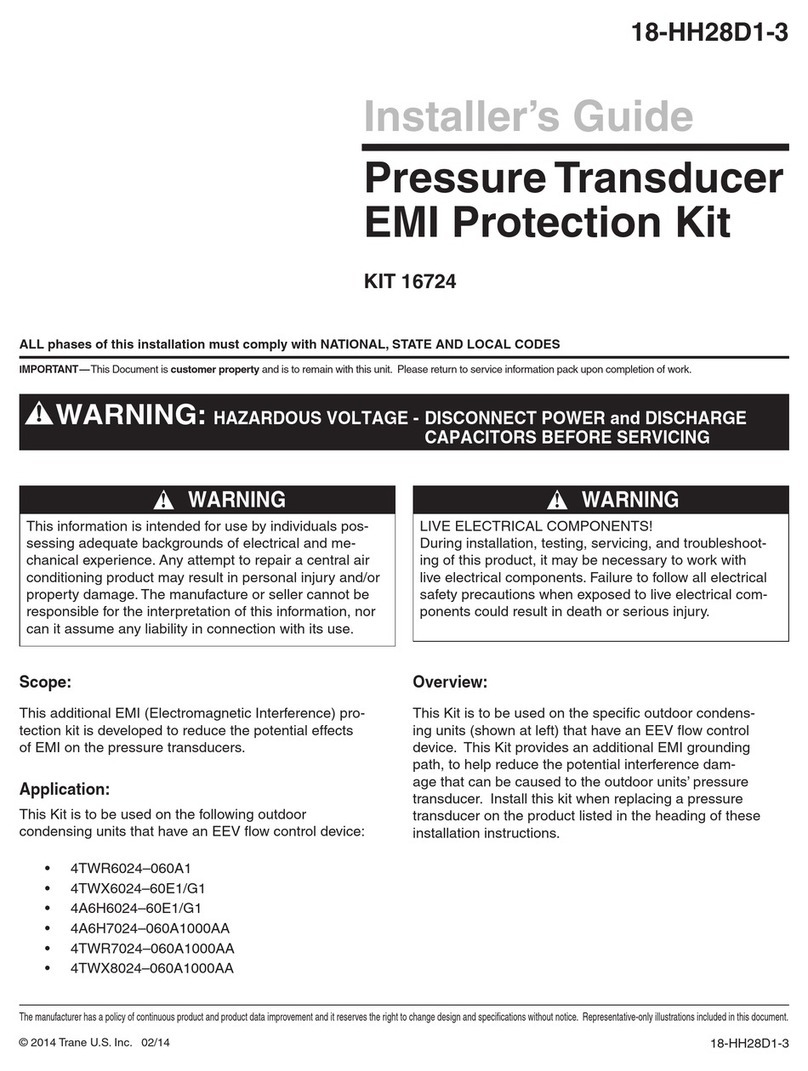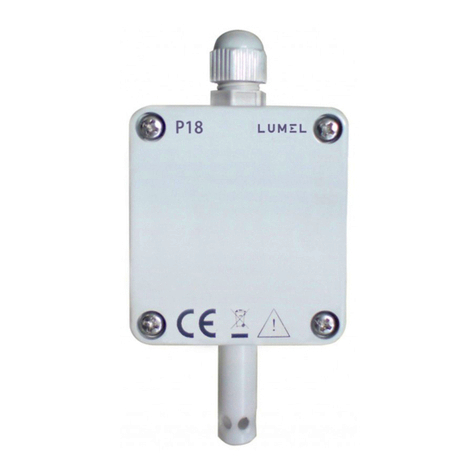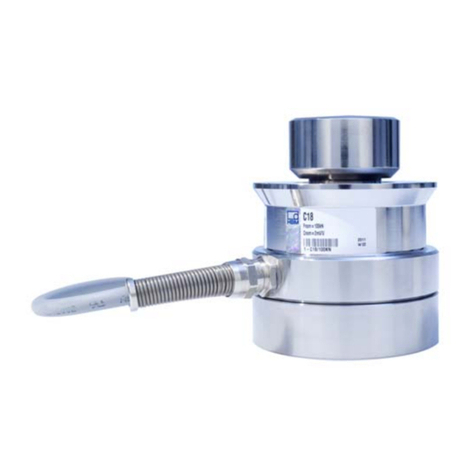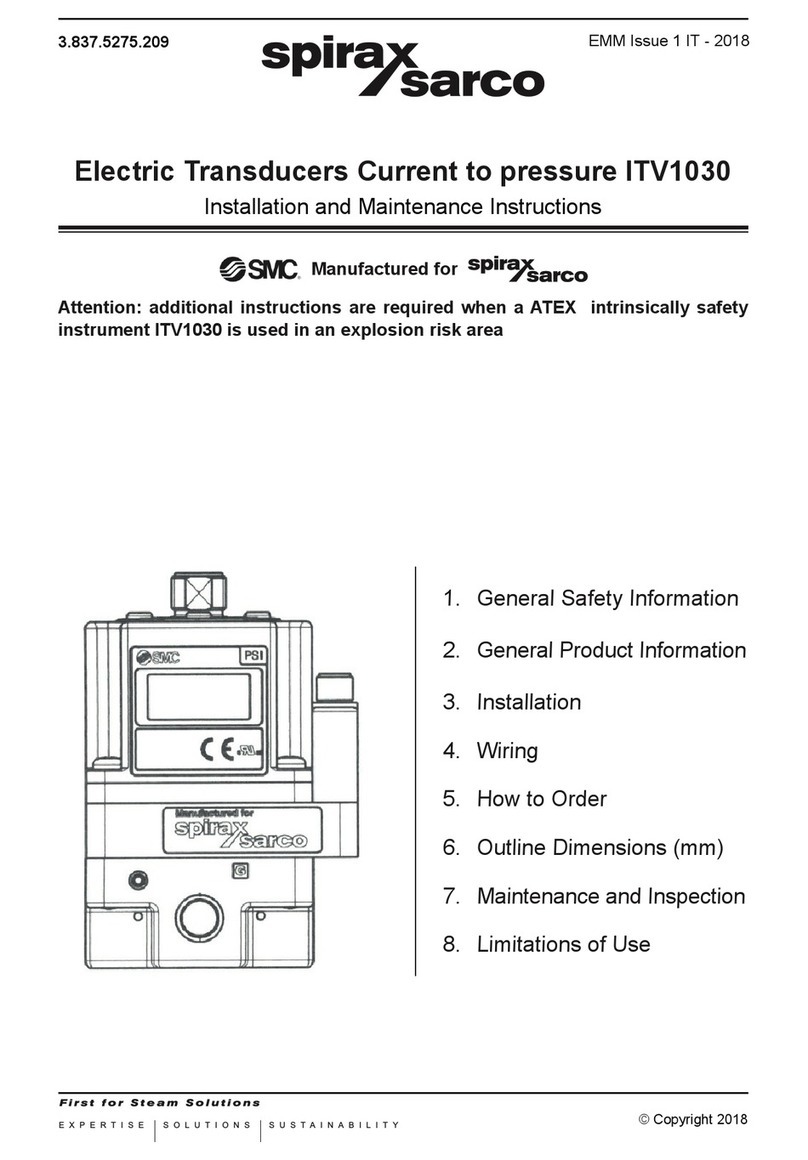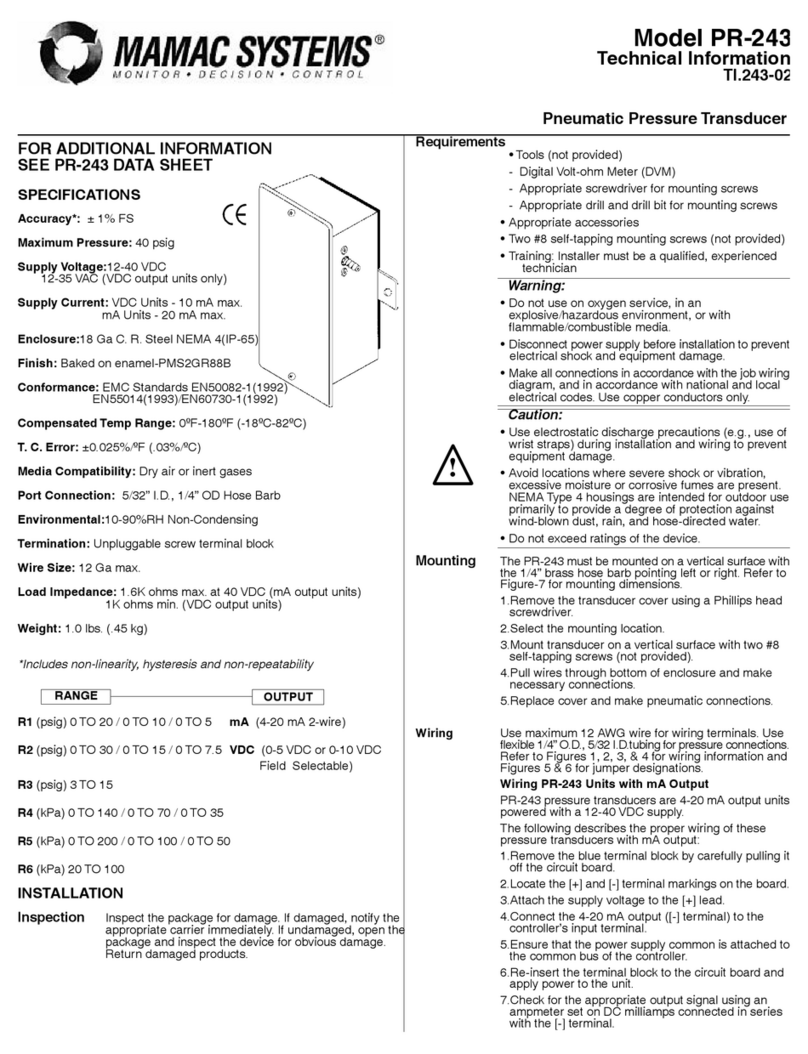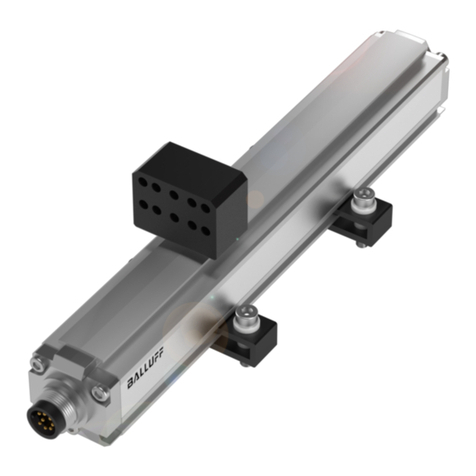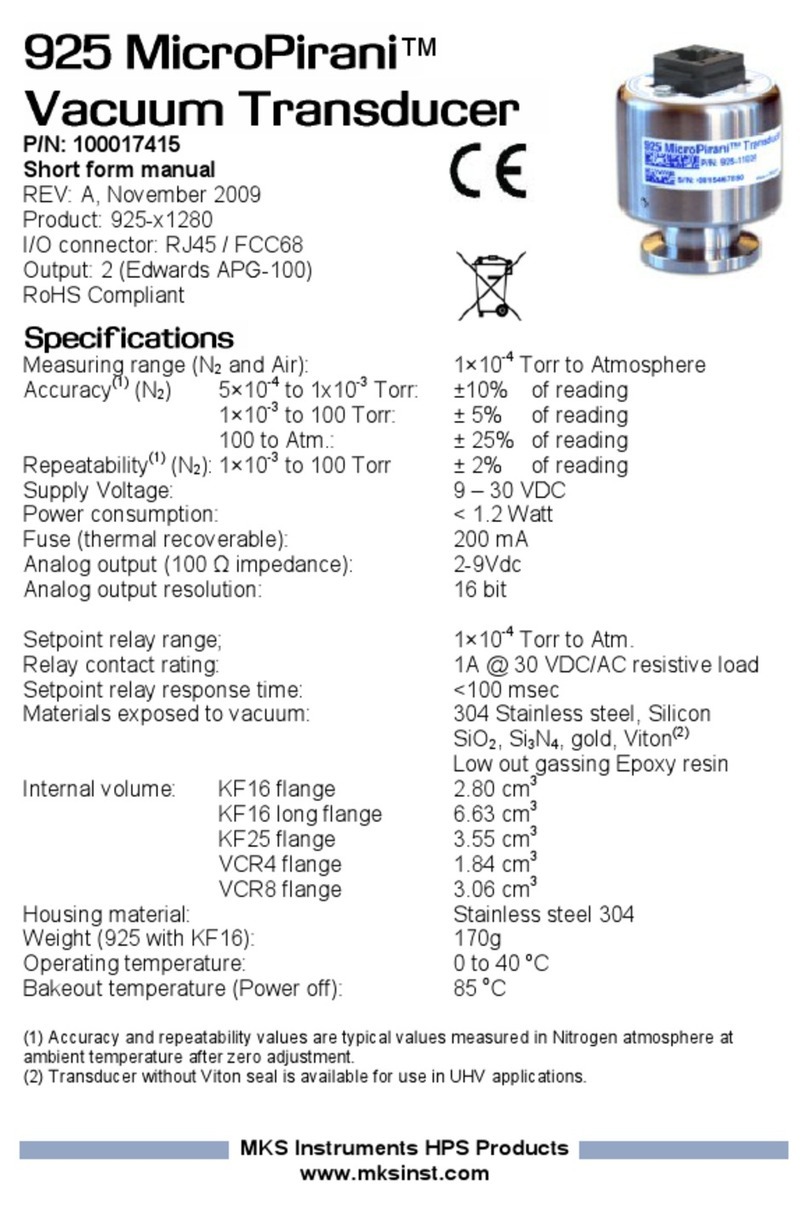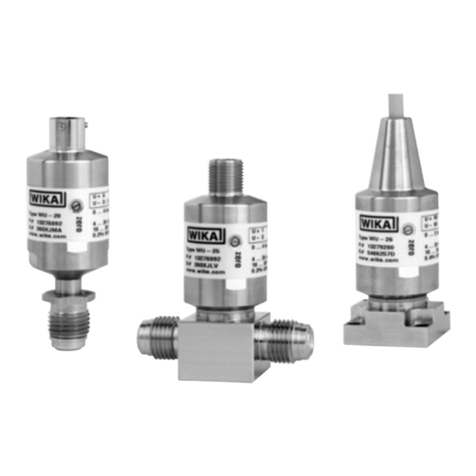
Installation in a Cored Fiberglass Hull
The core (wood or foam) must be cut and sealed carefully. The
core must be protected from water seepage, and the hull must be
reinforced to prevent it from crushing under the hull nut allowing
the housing to become loose.
CAUTION: Completely seal the hull to prevent water seepage into
the core.
1. Drill a Ø 3mm or 1/8" pilot hole from inside the hull. If there is a rib,
strut, or other hull irregularity near the selected mounting location,
drill from the outside. (If the hole is drilled in the wrong location, drill
a second hole in a better location. Apply masking tape to the outside
of the hull over the incorrect hole and fill it with epoxy.)
2. Using a Ø 51mm or 2" hole saw, cut the hole from outside the hull
through the outer skin only (Figure 6).
3. From inside the hull using a Ø 60mm or 2-3/8" hole saw, cut through
the inner skin and most of the core. The core material can be very
soft. Apply only light pressure to the hole saw after cutting through
the inner skin to avoid accidentally cutting the outer skin.
4. Remove the plug of core material so the inside of the outer skin and
the inner core of the hull are fully exposed. Sand and clean the inner
skin, core, and the outer skin around the hole.
5. If you are skilled with fiberglass, saturate a layer of fiberglass cloth
with a suitable resin and lay it inside the hole to seal and strengthen
the core. Add layers until the hole is the correct diameter.
Alternatively, a hollow or solid cylinder of the correct diameter can
be coated with wax and taped in place. Fill the gap between the
cylinder and hull with casting epoxy. After the epoxy has set, remove
the cylinder.
6. Sand and clean the area around the hole, inside and outside, to
ensure that the marine sealant will adhere properly to the hull. If
there is any petroleum residue inside the hull, remove it with either
mild household detergent or a weak solvent (alcohol) before sanding.
7. Proceed with “Bedding” (page 2).
Operation & Maintenance
How the Valve Works
THE VALVE IS NOT A WATERTIGHT SEAL! The sensor
incorporates a self-closing valve which minimizes the flow of water
into the boat when the insert is removed. The curved flap valve is
activated by both a spring and water pressure. Water pushes the
flap valve upward to block the opening, so there is no gush of water
into the boat. Always install the insert or the blanking plug secured
with the cap nut and safety wire for a watertight seal.
Using the Blanking Plug
To protect the insert, use the blanking plug:
• When the boat will be kept in salt water for more than a week.
• When the boat will be removed from the water.
• When aquatic growth buildup on the insert is suspected due to
inaccurate readings from the instrument.
1. All the O-rings must be intact and well lubricated to make a
watertight seal. On the blanking plug, inspect the O-rings
(replace if necessary) and lubricate them with the silicone
lubricant supplied or petroleum jelly (Figure 7).
2. Remove the insert from the housing by removing the safety wire
and unscrewing the cap nut (Figure 5). This will raise the insert.
Remove the insert with a slow pulling motion. Replace it by
sliding the blanking plug into the housing.
NOTE: In the very unlikely event that the valve breaks, replace
the housing the next time the boat is hauled.
3. With the blanking plug fully inserted, screw the cap nut several
turns until the threads are engaged. Continue to tighten the cap
nut completely. Hand tighten only. Do not over tighten.
NOTE: The blanking plug must be fully inserted in the housing
and the cap nut screwed on completely for a watertight seal.
4. Reattach the safety wire to prevent the blanking plug from
backing out in the unlikely event that the cap nut fails or is
screwed on incorrectly.
Winterizing
After the boat has been hauled for winter storage, remove the
blanking plug to let the water drain away before reinserting it. This
will prevent any water from freezing around the blanking plug,
possibly cracking the plastic.
Cleaning & Replacing O-rings
Aquatic growth can accumulate rapidly on the sensor’s face
reducing performance within weeks. Clean the insert with a
Scotch-Brite®scour pad and mild household detergent, being
careful to avoid making scratches. If fouling is severe, lightly wet
sand it with fine grade wet/dry paper.
All the O-rings must be intact and well lubricated to make a
watertight seal. Install the O-rings on the insert and blanking plug
as shown (Figure 7).
Replacement Sensor & Parts
The information needed to order a replacement Airmar sensor is
printed on the cable tag. Do not remove this tag. When ordering,
specify the part number, date, and frequency in kHz. For convenient
reference, record this information on the top of page one.
Lost, broken, or worn parts should be replaced immediately. If you
have purchased a plastic housing and have a wood hull or desire
greater strength, purchase an Airmar metal housing. Obtain parts
from your instrument manufacturer or marine dealer.
Gemeco USA
Tel: 803-693-0777
Airmar EMEA Europe, Middle East, Africa
Tel: +33.(0)2.23.52.06.48
Email: sales@airmar-emea.com
Figure 6. Preparing a cored fiberglass hull
inner skin
core
outer skin
solid or hollow cylinder
pour in
casting
epoxy
Ø 9-12 mm
(3/8-1/2")
larger than the
hole through the
hull’s outer skin
hull thickness
Copyright © 2004 - 2022 Airmar Technology Corp.
Figure 7. Replacing the O-rings
blanking
insert
yellow
O-ring
small
black
plug
O-ring(s)
Copyright © 2005 - 2022 Airmar Technology Corp.
4
NOTE: O-rings
must be intact
and well
lubricated to
make a watertight
seal.
Copyright © 2006 - 2022 Airmar Technology Corp. All rights reserved.
35 Meadowbrook Drive, Milford, New Hampshire 03055-4613, USA
www.airmar.com
